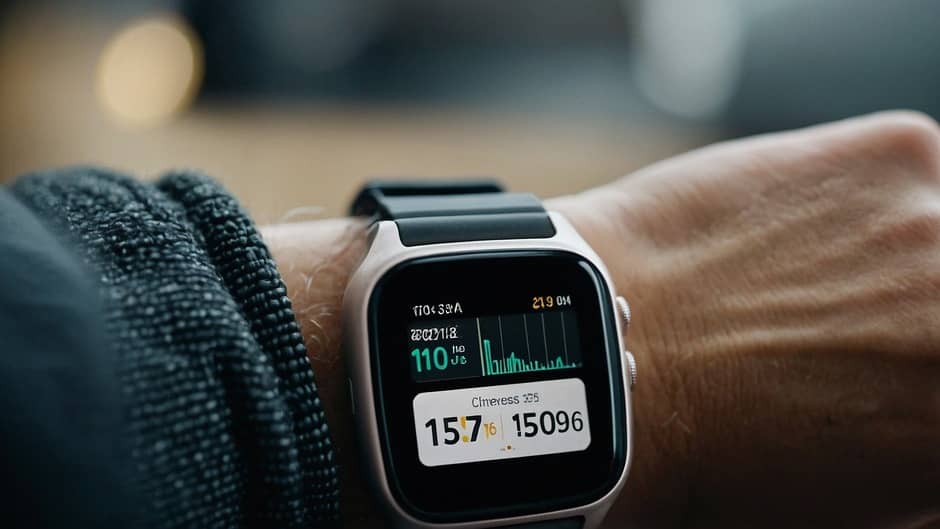Table of Contents
Let’s examine what a woman’s typical BMI is in more detail.
Imagine that this is a casual discussion among us all on a matter relevant to our health. Thus, the Body Mass Index, or BMI, is a tool for figuring out if an individual is at a healthy weight for their height.
It is a simple computation that takes your weight and height into account.
Let’s find out body mass index normal value. Now, what makes this so important?
To find out where you are with your weight and if you are underweight, overweight, or even obese, check your body mass index (BMI). But remember that a person’s BMI is only a number.
It’s helpful, but it doesn’t provide you a whole picture of your health.
Now, to discuss normality, the optimal BMI range is typically found between 18.5 and 24.9.
Most women believe that this range is healthy. But this is when the intriguing part begins. Expert analysis and investigation have revealed that there is some wiggle room even within this range.
For example, a BMI of 24.9 or below may still be regarded as healthy, but it may also suggest a higher risk of obesity.
Conversely, a BMI nearer 18.5 falls inside the normal range, meaning that while it can be acceptable for certain women, it might be a bit low for others, particularly if it coexists with low mass of muscle. Why is this such a big deal?
A normal body mass index is typically linked to a decreased risk of major health problems such as diabetes, heart disease, and some types of cancer.
However, bear in mind that BMI is not flawless. It does not account for your muscle mass, bone density, or the distribution of your weight.
As a result, even though a woman with a high BMI may be physically active and muscular, she may not be unhealthy.
The most recent guidelines, which went into effect around 2024, use comparable BMI levels, but they place more emphasis on considering other factors that are related to BMI. For example, a closer look is currently being given to the abdomen circuit.
This is because carrying excess weight around your middle may be harmful to your health even if your BMI is within normal limits.
Therefore, doctors may look at both your waist measurement and your BMI to obtain a more accurate picture of your health. Age is an additional factor. Women’s body composition varies with age. Our BMI may be impacted by our propensity to gain fat and lose muscle.
While it’s important to be mindful of, this does not necessarily mean that having a slightly higher BMI as we age is detrimental.
In summary, while the average BMI for women is between 18.5 and 24.9, this is only one part of the puzzle.
It is usually advantageous to consider things like waist size, muscular mass, and general wellness.
Remember that feeling strong and confident in your body is more important than trying to fit in. Therefore, if you have any queries regarding your BMI or what it signifies for your health, don’t be hesitant to ask your doctor.
They can help you understand how it connects to your general health and what steps you might take to keep yourself healthy.
You know how, when we discuss health, we frequently bring up the subject of BMI, or body mass index?
In essence, it involves calculating a person’s standing position by dividing their height by weight.
The intriguing part about this number is that it applies to all adults and does not differentiate between genders or ages. But here’s where it gets complicated: BMI might not signify the same thing to different people, especially in varied cultures.
Remember that the way that figure converts into actual body fat might vary depending on a person’s genetics, lifestyle, and body type. Therefore, even if the BMI scale is a useful tool, it has several flaws, and its recommendations for health can vary depending on your place of origin.
Now let’s talk about the significance of BMI in a wider setting.
Women’s BMI, especially in the 15–49 age range, might provide valuable insight into their nutritional state.
On opposing ends of the spectrum are women who are underweight and those who are overweight. These two conferences are important for comprehending global trends in health and well-being.
Actually, the Global Nutrition Monitoring Framework measures the proportion of underweight women in that age group compared to overweight women who are over 18.
This framework tracks the performance of global nutrition like an extensive checklist.
Also Read – How Much Weight Can You Lose Fasting For 21 Days? (2024)
Body Mass Index Normal Value
Adults who are overweight are also assigned to the NCD (Non-Transmittable Infections) Global Monitoring System, which monitors chronic conditions such as diabetes and heart disease.
The World Health Organization (WHO) is pursuing a wider initiative to track universally relevant health indicators.
Now, how should BMI be defined?
Actually, it’s quite simple to calculate: just divide your weight in kilos by your height in meters squared.
Assume you weigh 58 kg and stand 1.70 meters tall. That would be a BMI of 20.1. What does the figure currently stand for?
The breakdown is as follows:
- If your BMI is less than 17.0, that’s considered thinness.
- If it’s less than 18.5, you’re classified as underweight.
- A BMI between 18.5 and 24.9 is seen as normal weight.
- If it’s 25.0 or above, you’re in the overweight category.
- And if it’s 30.0 or higher, that’s obesity.

So what implications do these figures have in the actual world?
Let’s start with becoming slender.
A BMI under 17.0 is considered a warning indication. Studies conducted across different landmasses indicate that having so little can increase your risk of getting sick. Being skinny isn’t enough; your body is working hard to maintain its health.
If, however, your BMI is less than 16.0, that is when things get really scary. By then, major health problems are approaching, including diminished physical function, excessive exhaustion, and even a higher chance of passing away.
Thus, keeping an eye on that figure is crucial. “Underweight” is a little more complex term.
Although not as strong as we’d want, a BMI of 18.5 serves as the cutoff criterion.
Research on the most accurate measure of thinness is still in progress. However, 3–5% of healthy adult populations have a BMI of less than 18.5, thus it’s not out of the ordinary.
Also Read – Are Protein Shakes Good For Losing Fat? – Are Protein Shakes Good For Your Stomach? (2024)
Now that we are classified as overweight, the situation for our long-term health becomes increasingly bleak.
A person is more prone to develop chronic illnesses like type 2 diabetes, heart disease, and stroke if their body mass index (BMI) is 25 or above.
Additionally, being overweight raises the chance of joint issues, certain malignancies, and gallbladder disease.
It’s important to be aware that some people may begin to exhibit these health hazards even at the lower end of the overweight spectrum.
The highest body mass index (BMI) of 30 or over is considered obesity. This is not just a statistic; it is an indicator of a condition that is nearly always preventable.
Corpulence is linked to a wide range of illnesses that can significantly affect your level of satisfaction as well as the cost of health care plans.
It has to do with unexpected death, disability, and a weakened sense of appreciation for ordinary life.
The good news is that changing one’s lifestyle can have a significant impact, but it takes ongoing care.
Therefore, while talking about BMI, it is not just about falling into a specific category. It’s a tool that highlights areas where we might need to adjust and provides information about possible health dangers.
It’s always a good idea to monitor your BMI, but remember that this is just one part of your total health.
Read us on Medius.




